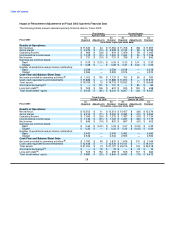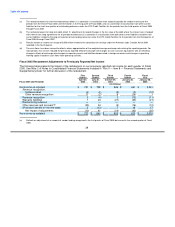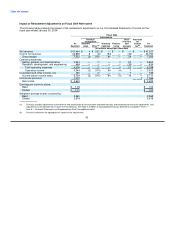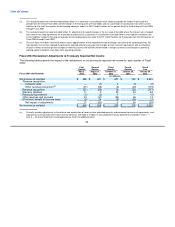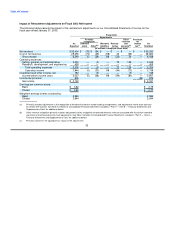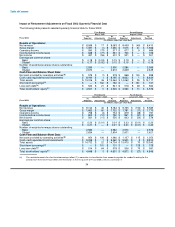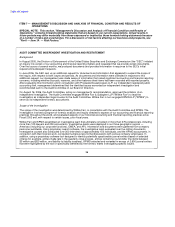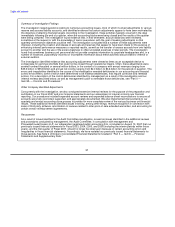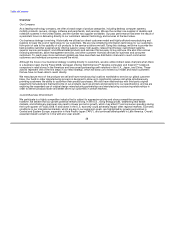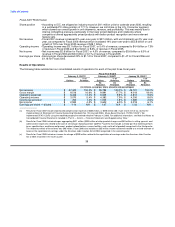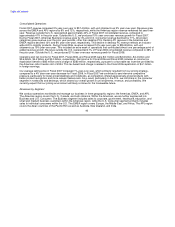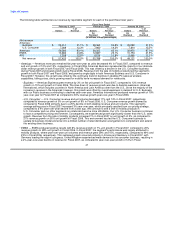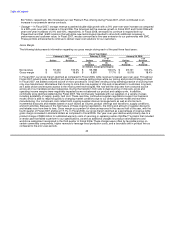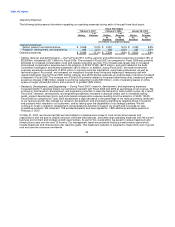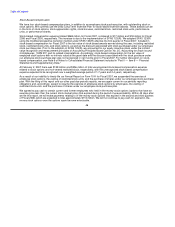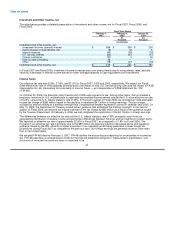Dell 2006 Annual Report Download - page 40
Download and view the complete annual report
Please find page 40 of the 2006 Dell annual report below. You can navigate through the pages in the report by either clicking on the pages listed below, or by using the keyword search tool below to find specific information within the annual report.
Table of Contents
Summary of Investigation Findings
The investigation raised questions relating to numerous accounting issues, most of which involved adjustments to various
reserve and accrued liability accounts, and identified evidence that certain adjustments appear to have been motivated by
the objective of attaining financial targets. According to the investigation, these activities typically occurred in the days
immediately following the end of a quarter, when the accounting books were being closed and the results of the quarter
were being compiled. The investigation found evidence that, in that timeframe, account balances were reviewed,
sometimes at the request or with the knowledge of senior executives, with the goal of seeking adjustments so that
quarterly performance objectives could be met. The investigation concluded that a number of these adjustments were
improper, including the creation and release of accruals and reserves that appear to have been made for the purpose of
enhancing internal performance measures or reported results, as well as the transfer of excess accruals from one liability
account to another and the use of the excess balances to offset unrelated expenses in later periods. The investigation
found that sometimes business unit personnel did not provide complete information to corporate headquarters and, in a
number of instances, purposefully incorrect or incomplete information about these activities was provided to internal or
external auditors.
The investigation identified evidence that accounting adjustments were viewed at times as an acceptable device to
compensate for earnings shortfalls that could not be closed through operational means. Often, these adjustments were
several hundred thousand or several million dollars, in the context of a company with annual revenues ranging from
$35.3 billion to $55.8 billion and annual net income ranging from $2.0 billion to $3.6 billion for the periods in question. The
errors and irregularities identified in the course of the investigation revealed deficiencies in our accounting and financial
control environment, some of which were determined to be material weaknesses, that require corrective and remedial
actions. For a description of the control deficiencies identified by management as a result of the investigation and our
internal reviews described below, as well as management's plan to remediate those deficiencies, see "Part II —
Item 9A — Controls and Procedures."
Other Company Identified Adjustments
Concurrently with the investigation, we also conducted extensive internal reviews for the purpose of the preparation and
certification of our Fiscal 2007 and prior financial statements and our assessment of internal controls over financial
reporting. Our procedures included expanded account reviews and expanded balance sheet reconciliations to ensure all
accounts were fully reconciled, supported, and appropriately documented. We also implemented improvements to our
quarterly and annual accounting close process to provide for more complete review of the various business unit financial
results. These additional reviews identified issues involving, among other things, revenue recognition in connection with
sales of third party software, amortization of revenue related to after-point-of-sale extended warranties, and accounting for
certain vendor reimbursement agreements.
Restatement
As a result of issues identified in the Audit Committee investigation, as well as issues identified in the additional reviews
and procedures conducted by management, the Audit Committee, in consultation with management and
PricewaterhouseCoopers LLP, our independent registered public accounting firm, concluded on August 13, 2007 that our
previously issued financial statements for Fiscal 2003, 2004, 2005, and 2006 (including the interim periods within those
years), and the first quarter of Fiscal 2007, should no longer be relied upon because of certain accounting errors and
irregularities in those financial statements. Accordingly, we have restated our previously issued financial statements for
those periods. See Note 2 of Notes to Consolidated Financial Statements included in "Part II — Item 8 — Financial
Statements and Supplementary Data."
37



